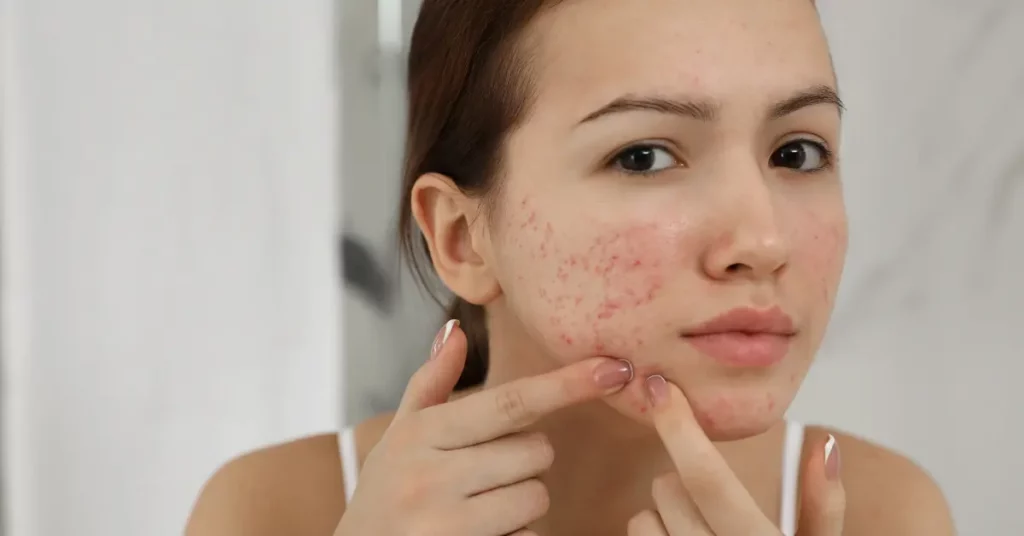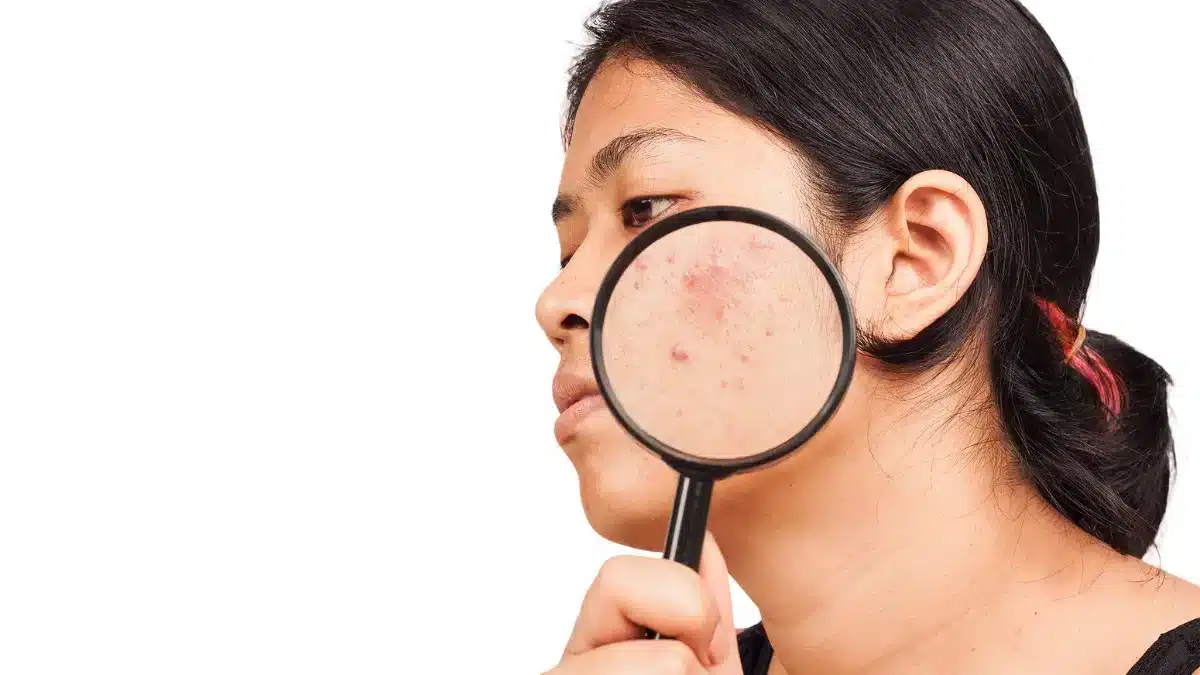Acne After Stopping Birth Control: Causes and Management
The birth control pill can help to regulate hormones in people who have hormonal imbalances.
In some cases, it is prescribed by doctors to treat acne.
However, stopping hormonal birth control might also cause acne flare-ups and is referred to as hormonal acne or post-pill acne.
Post-pill acne appears after discontinuing the pill and typically spreads over the face, from the brow to the jawline and temples.
This article explores the route from getting acne after stopping birth control to potential treatment options.
The connection between birth control and acne
An increase in Androgen production causes acne.
Birth control aids in the reduction of this hormone (Androgen) in the blood.
Therefore, as certain kinds of birth control can reduce acne, doctors may prescribe certain birth control tablets for treating acne in some cases.
While some birth control pills can assist with acne, they can resurface after an individual stops taking the medication.
How long does acne last after stopping birth control

Post-pill acne can last for a few months.
Some people may experience a period of acne breakouts after stopping birth control before their acne disappears on its own.
Most people begin to notice changes in the skin around three months after stopping the pill, but things should normalize around six months, especially with some treatment.
However, the duration of post-pill acne can vary from person to person, and some people may experience long-lasting effects.
How to treat acne after stopping birth control
The effective management of acne necessitates carefully selecting anti-acne agents based on two critical factors: the acne’s clinical appearance and the unique requirements of each individual.
Consultation with a medical professional can guarantee that one is acquiring suitable products to support hormonal balance and skin health.
Antibiotics, azelaic acid, hyaluronic acid, prescription retinoids, and niacinamide are among the common first-line treatment approaches that might be taken for post-pill acne.

Fight your post-pill acne with effective solutions available at WowRx!
Place your orders today.
Antibiotics
Oral antibiotics may be recommended for post-pill acne due to their anti-inflammatory effects, especially for moderate to severe cases.
Tetracyclines are commonly prescribed, and they are often used in combination with topical treatments.
The treatment duration can last 4 to 6 months, and improvement is typically noticed after about six weeks.
AZA acid

As a first-line treatment option for post-pill acne, AZA acid — also known as azelaic acid — is like an all-in-one treatment solution.
It functions as an antioxidant, is antimicrobial and anti-inflammatory, depigmenting, and is effective against blackheads and whiteheads.
Additionally, it can treat post-inflammatory hyperpigmentation, which refers to dark spots and markings that remain after acne lesions.
In other words, it contributes to healthy skin.
Hyaluronic acid
The body naturally produces hyaluronic acid, which aids moisture retention and skin hydration.
Hyaluronic acid can help minimize the probability of breakouts and facilitate healing by keeping the skin hydrated.
It can also help lessen the redness and irritation that come with acne after stopping birth control because it is an anti-inflammatory.
Hyaluronic acid can promote collagen formation, which is necessary for maintaining healthy skin and minimizing the appearance of acne scars.
Retinoids
Retinoids are a topical therapy applied directly to the skin to increase the skin cell turnover rate.
As a result, dead epidermal cells are removed more quickly, preventing their accumulation within the hair follicle.
Prescription-only retinoids are more successful in treating acne and acne scars by decreasing sebum production in adults.
Furthermore, retinoids are the recommended course of treatment for post-inflammatory hyperpigmentation.
Niacinamide
Niacinamide has anti-inflammatory properties, which can alleviate swelling and redness associated with acne after stopping birth control.
Additionally, it also helps lessen the marks that acne has left on the skin by controlling the quantity of sebum fluid the skin produces.
Conclusion
Post-pill acne is a common side effect of discontinuing hormonal birth control.
It lasts for several months and is caused by increased androgen production.
Treatment options include antibiotics, azelaic acid, hyaluronic acid, prescription retinoids, and niacinamide.
Consulting a doctor to determine the best course of action for managing post-pill acne is essential.
With the right treatment approach, post-pill acne can be effectively managed, allowing individuals to achieve clear, healthy skin.
Frequently Asked Questions
Can birth control cause acne?
Yes, certain birth control methods may cause acne as a side effect. Hormonal contraceptives can influence sebum production, potentially leading to skin issues. It’s advisable to consult a doctor to discuss individual concerns and find a suitable option.
How long does acne last after stopping birth control?
The duration of acne after stopping birth control varies. Some may experience breakouts for a few weeks, while others may take months. Hormonal changes post-cessation can affect the skin, and individual responses differ. Consult a healthcare professional for personalized advice.
How do I stop getting acne when I stop birth control?
Stopping birth control may disrupt hormone levels, triggering acne. Consult a dermatologist for personalized advice. A medical professional can guarantee that you are acquiring suitable products to support hormonal balance and skin health. Patience is key, as it may take time for your body to adjust.
When does post pill acne peak?
Post-pill acne often peaks around 3 to 6 months after discontinuing oral contraceptives. Hormonal fluctuations, particularly an increase in androgens, can contribute to this. However, individual experiences vary; some may see improvement sooner or later. Consulting a dermatologist for personalized advice is recommended.
WowRx uses only high-quality sources while writing our articles. Please read our content information policy to know more about how we keep our content reliable and trustworthy.






